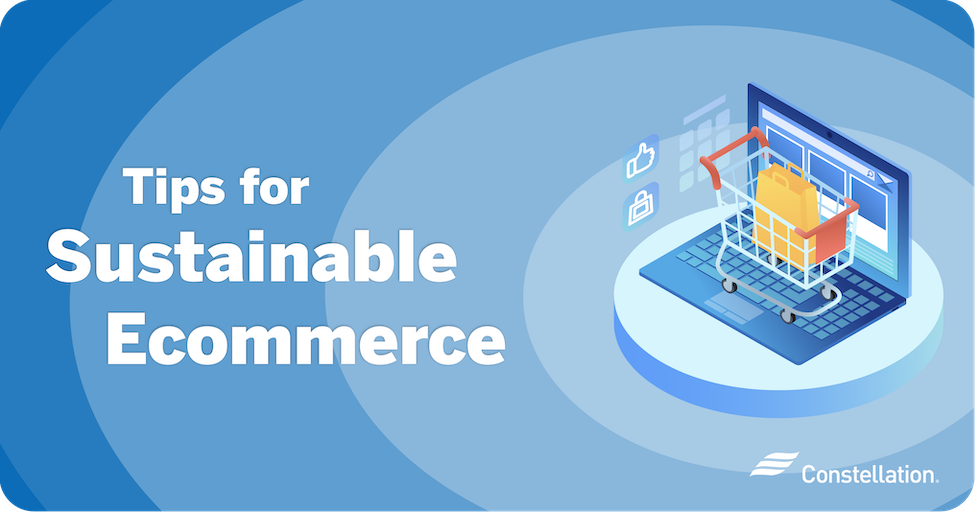
- Category:
Home Energy Savings -
Last updated:
April 16, 2025
The Future of Smart Homes and Connected Technology
Connected technology is driving the future of smart homes, and the advantages of smart home technology of the future are many. As our lives get busier, smart home devices give us control, convenience and comfort as they help us get more done.
Already, about 53 million people in the United States have a voice control system like Amazon Alexa in their homes, with ownership and usage expected to grow exponentially within the next five years. Some 4,000 new smart home devices can connect with the system, including thermostats, power plugs, home entertainment systems, cameras, door locks and kitchen appliances. And you can control them all with smart home apps.
Is there a growing demand for new smart home devices?
What was science fiction not long ago is becoming commonplace, and smart home predictions for even the next decade are breathtaking. With so many consumers looking for convenience, security, comfort and energy efficiency, it’s no wonder that smart home technology estimates predict that more than 21 billion smart home devices could be in use by the end of 2020.
The fastest growing types of smart home technologies include applications in:
- Entertainment
- Energy management
- Automation of basic systems
- Monitoring pets, elderly parents, young children and teens
- Security
Taking the example of home security, the newer systems are proactive, offering you real-time insights and detailed reporting. With a smart home security system such as Constellation Connect, you can connect window and door sensors and check on them when you’re away. You can also remotely turn lights on and off to give your home a lived-in look. Connected cameras let you see what’s going on in and around your home, saving recordings that can be extremely helpful in the aftermath of any incident.
How future technology could affect smart homes
The internet of things is just getting started. In the coming years, new smart home devices will skyrocket in number and variety, all connected to the internet and controlled with smart home apps and cell phones. Smart home technology of the future will include increasingly sophisticated HVAC and lighting systems that learn when you’re home, remember the temperature and brightness you prefer, and run in ways that optimize energy use.
Washing machines you can start with your phone from the office before you get home, vacuum cleaners that clean up when you schedule them to work, and refrigerators that respond to voice commands to place grocery orders are in the development pipeline. Here are some smart home predictions of the new world just around the corner.
Almost everyone will use voice control.
People are quickly adapting to using voice for controlling devices. People like it because it’s hands-free and eyes-free: You don’t have to look at or touch an interface. And for those who don’t type, voice is a welcome improvement. As devices grow smarter, you won’t have to flip a switch to turn them on — you can just tell them to do it.
Imagine yourself baking, your hands sticky with dough. You can tell your oven to turn itself on and then to open the door when you’re ready to put your pie inside. You can tell your lights when to turn on, your shades when to open and your shower when to start. And no one will have to go hunting for the television remote ever again. Managing your home through voice is a leading smart home technology of the future.

Smart homes will get better at monitoring day-to-day activities.
Smart sensors are being built into hundreds of everyday appliances. Along with that hardware is software that makes use of artificial intelligence, big data and machine learning to monitor, track, learn and optimize. A set of sensors in your home, for example, could track your movements, learn your habits and take in data such as how much heat you generate in your kitchen at certain times of the day, all used to optimize the running of your air conditioner.
By sensing, reacting and customizing, new smart home devices will make you more comfortable and manage your home more efficiently.
What’s more, sensors are moving beyond silicon chips. Smart paint could potentially function as a sensor and even a touchscreen with nanocomputer technology. And beyond paint, “smart dust” that could be scattered across land areas has been proposed to track temperature, humidity and movement.
Smart home assistants will keep homeowners healthier.
While convenience is a big driver of smart home device adoption, health is just as important. Safety, comfort and well-being can all be enhanced with some of the new smart home technologies of the future. Some promising applications include:
- Assistive personal devices. These devices can monitor your vital functions, including heart rate and body temperature. Others can track you during exercise to monitor effort and calorie count. For people with health problems, smart devices, possibly connected to implants, can monitor oxygen or glucose in the blood so treatment can be fine-tuned.
- Smart beds and sleep monitors. Smart beds aim to help you get a healthy night’s sleep. Such beds could offer customized mattress firmness that could sense and react to pressure points and body temperature. They could track your breathing, heart rate and restfulness. They could even help you wake up and smell the coffee, starting your brew and opening your blinds.
- Smart toilets. By collecting waste samples on a regular basis, smart toilets could detect infections or serious diseases like cancer early. They could help people with chronic diseases like diabetes better manage their conditions. Connected to the internet, this new smart home technology will take telemedicine to the next level.
- Emotional health. A class of technologies in the field of emotion AI have promise for people suffering from emotional stresses. Apps using artificial intelligence could sense tone of voice, facial expressions, speech patterns and biometrics to help people with their own self-awareness. For those with autism, these apps could help people better interact with others.
No, robots aren’t taking over, but artificial intelligence is here to stay.
Consumer concerns about advanced technologies like artificial intelligence and sensors, trackers and databases are growing. Some analysts even talk about “techlash,” resistance to adopting new technologies. These dynamics are common in times of fast change; however, past adoption trends suggest that consumers will eventually accept well-designed solutions that provide real value.
In their smart home predictions, experts expect a trend from user-driven smart home devices to user-responsive smart home technology. Instead of a human initiating through commands, machines built with AI will use machine learning to identify patterns and preferences to anticipate our desires, from how often we want to vacuum to how bright we want our living rooms.
The key to tech adoption will be technologies that give people control of their information, privacy protection and exceptional cybersecurity.
More devices will play nicely with each other.
When it comes to interoperability, the trend is more openness and flexibility. Look for devices that work equally well on Apple, Amazon, Microsoft and other device brands. Constellation Connect plays nicely with dozens of brands including Amazon Alexa, Google Nest, Honeywell, Kwikset, NuTone and many more. Because of consumer demand for cross-functionality, we have seen new companies like IFTTT launch in hopes of becoming a service to connect everything.
Security will have to step up as more devices become connected.
Security is top of mind for more than just computer professionals. Popular media regularly cover data breaches from smart home devices. Numerous industry and government groups are proactively addressing the concern. The Department of Homeland Security through the National Cybersecurity and Communications Integration Center offers security tips and dozens of resources. While companies will need to improve security in order to stay in business, consumers should take steps to protect themselves.
Smart homes will get better at saving energy.
Smart homes harness computing power and data to optimize energy use in a comprehensive way. From closing blinds when the sun hits certain windows to zoned cooling and heating, smart systems can minimize energy use while increasing your comfort. They save you money without sacrifice.
You may be freed of tangled charging cables!
Wires multiplying and tangling are the bane of smart home users. Wireless devices that wirelessly charge are growing in popularity as a result. Devices needing constant power can stay charged without inconvenience.
Reducing your dependency on the wires that deliver power to your home is another trend. Microgeneration of electricity for your home and for your own use is an old idea — it’s how Thomas Edison originally expected electricity to work — with new applications. Innovators are looking at small-scale renewable power sources for homes, like wind, hydro and solar.
Interactive and virtual entertainment will take over the living room.
Big-screen televisions and surround sound have met their match. Virtual reality is coming to your living room soon. Immersive entertainment experiences are just one application. Education, communication, market research and co-working are other uses for this new smart home technology.
Homeowners will have more options for lighting their rooms.
Move over low-energy light-emitting diode (LED) bulbs. A new efficient light source is on the horizon: light-emitting coating (LEC). Marketed under the brand LumiLor®, this coating lets you “paint with light.” It’s an electroluminescent substance painted on top of an electrical substrate (also painted on) that emits light when an electric charge is applied.
Homeowners will still hold on to low-tech devices.
With every technology advance comes a yearning for old ways. Older readers might remember that video was going to kill the radio star. Not quite. Movies didn’t kill live theater. Television didn’t kill movies. CDs and MP3s haven’t killed vinyl records. Retro and analog options offer different experiences for which there is always a market.
Adopting new smart home technology will always be a choice. Google “tech free zone” and you will be inundated with articles about the benefits of being unconnected — at least some of the time. As people adjust to more technology, they will experiment with how much is the right amount. We already have tech-free restaurants. Schools have been known to ban screens during school hours. Tech-free rooms are a possible trend in even the most connected smart homes.
The future of smart homes and connected technology is already here — and the pace of innovation is fast. As with anything new, the exciting possibilities come with concerns and sometimes frustrations. Still, the value in terms of comfort, convenience, health, efficiency, security and even fun outweigh the cons. In a few short years, it will be hard to remember a time before our homes were smart and our lives were connected.




